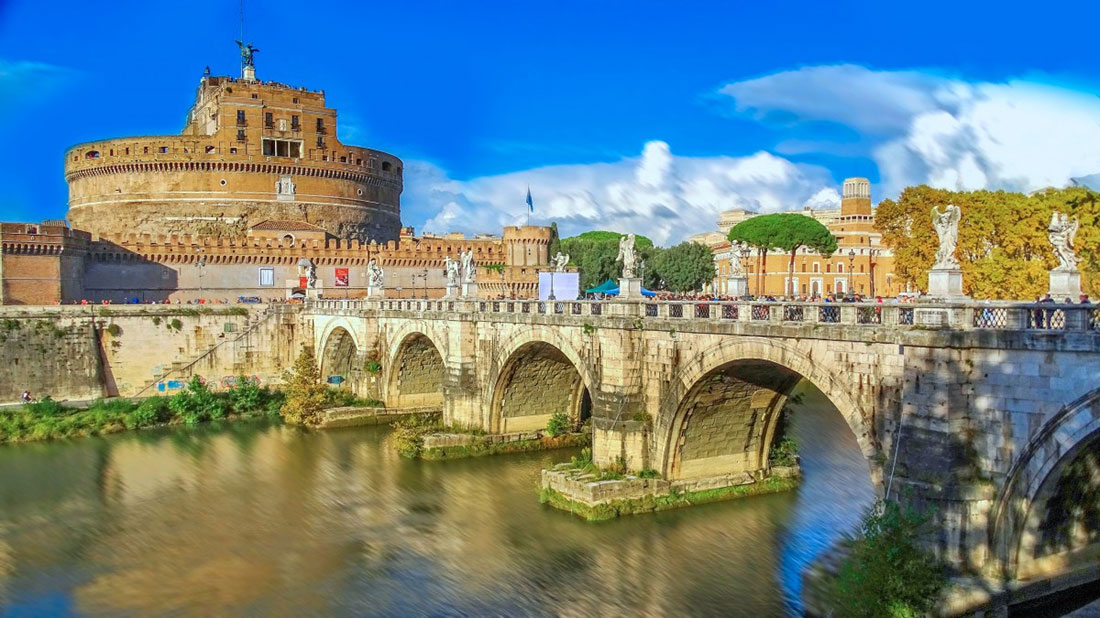While most monuments of the Roman era lay in ruins, the impressive Castel Sant’Angelo (Castle of the Holy Angel) in Rome has managed to withstand the test of time. Built almost 2000 years ago, this unique monument has undergone several structural and architectural transformations throughout its history. It was the tomb of the Roman Emperor Hadrian, a fortress, a residence of the Pope, and a prison. Today, the castle houses a museum showcasing artworks, frescoes, sculptures, and other artifacts from various periods of Roman history.

Castel Sant’Angelo, also known as the Hadrian’s Mausoleum or Sepulcrum Antoninorum, was built between 135-139 AD as a mausoleum for the Roman Emperor Hadrian and later became the final resting place for other rulers of the Empire. The building stands on the right bank of the Tiber River and guards the Sant’Angelo Bridge – one of the main bridges in ancient Rome.
The fortress takes its name from an old legend dating back to the darkest days of the Middle Ages. In the late 6th century AD, after the fall of Rome but a century before the Renaissance, a terrible plague struck the city. Thousands of sick people and dead bodies filled the streets, and Pope Gregory the Great led a procession through the city, praying to God to spare those who were still alive. Looking at the old, long-abandoned and dilapidated mausoleum of the Emperor Hadrian, the Pope saw a shining figure on top of the massive tomb. It was the Archangel Michael, who, before the eyes of the Pope, lowered his sword and put it into its scabbard, marking the end of the epidemic
Today, a statue on top of the Castel Sant’Angelo commemorates this story. The current bronze version dates back to the 1700s but replaces an older marble version that stood in the same place. The sculpture of the archangel Michael serves as a reminder to the residents of the Eternal City that God’s mercy is present even when things are going badly.
The mausoleum was transformed into a castle in 280 AD when the Aurelian Wall was built around it. The building occupied a strategically advantageous position on the Tiber River. Nevertheless, the castle was plundered in 410 and 537 AD, and many stones that covered most of the burial urns were destroyed. Later, as the Vatican was located outside the city walls and its defense became difficult, in 1722 it was connected to the Castel Sant’Angelo by a tunnel. Thus, the castle became a refuge for the Pope and a treasure trove to ensure the safety of valuable church property in case of an attack on the Vatican and St. Peter’s Basilica. Throughout the centuries, the castle was even used as a prison and execution site. In 1870, the Vatican handed over the Castel Sant’Angelo to the Italian army.
Sailko, via Wikimedia Commons (CC BY 3.0)
Sailko, via Wikimedia Commons (CC BY 3.0)
Having served as a prison, barracks, and even a warehouse for military materials, it was taken out of service in 1901. The mausoleum was completely abandoned until Colonel Luigi Durand de la Penne and Captain Mariano Borgatti decided to restore it.
After a large six-year restoration campaign, the castle became a museum and was opened by King Victor Emmanuel III. Inside, visitors can see the famous open-air set design, restored 15th-century shops, numerous works of art, statues, frescoes, and even visit the Papal apartments, which are furnished with authentic historical items.